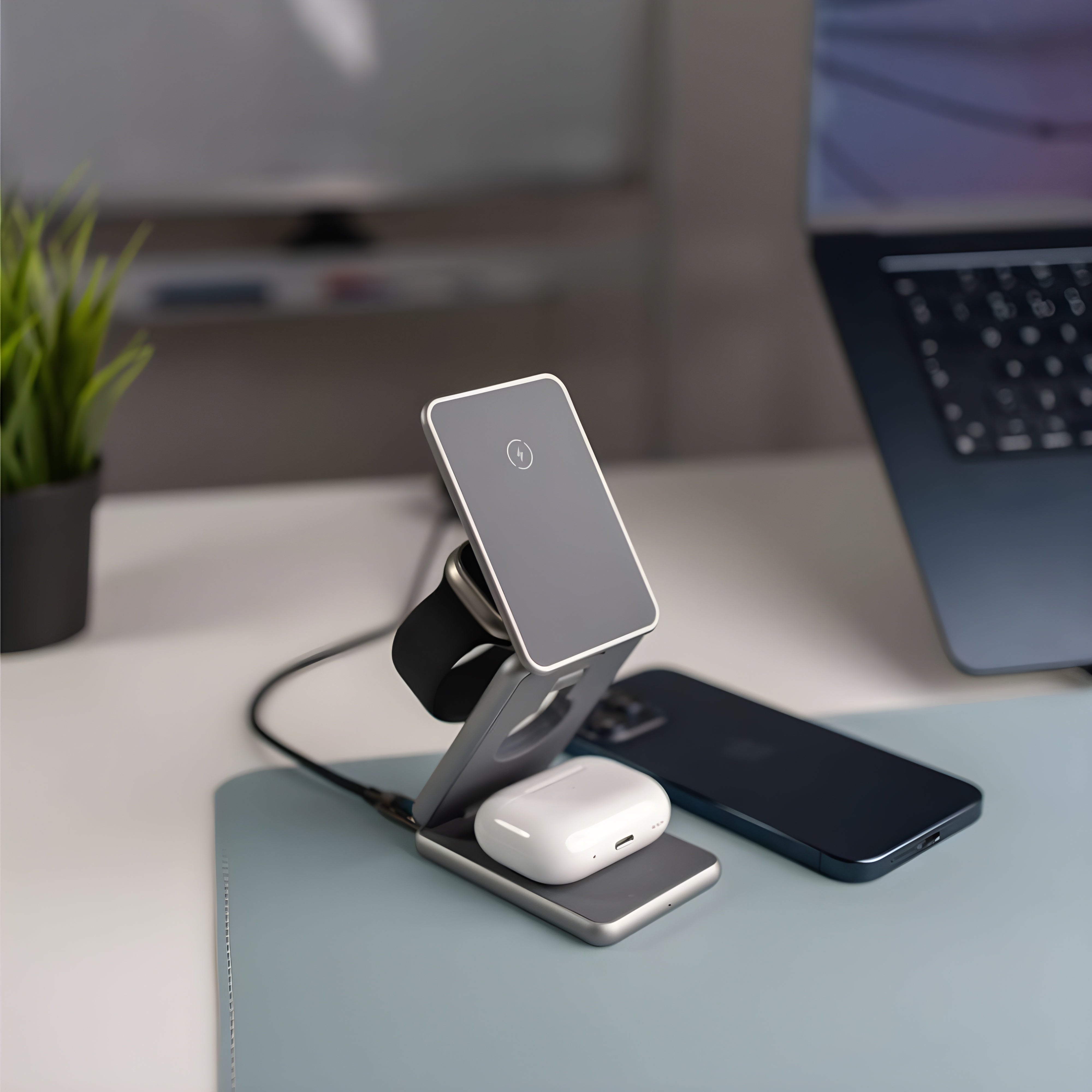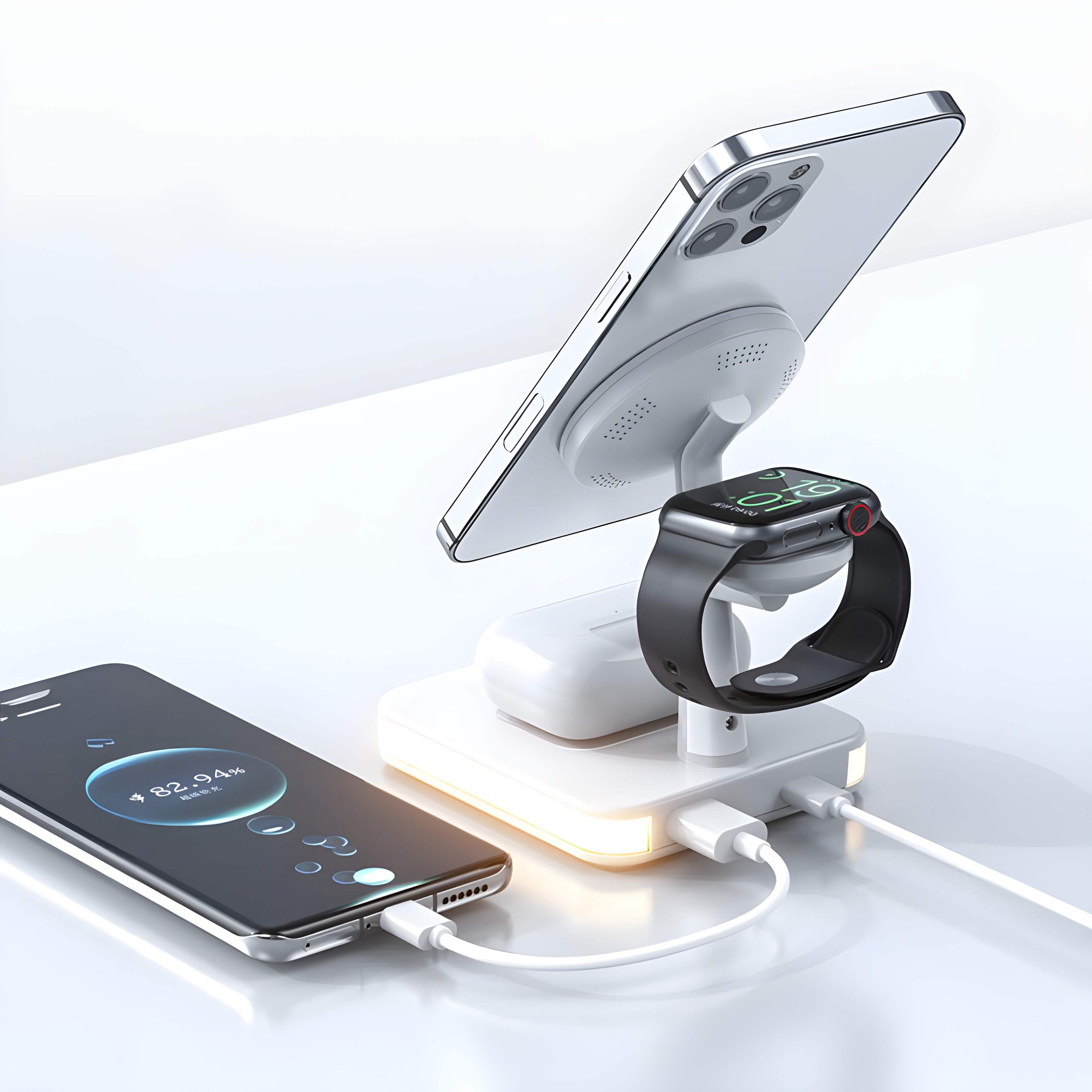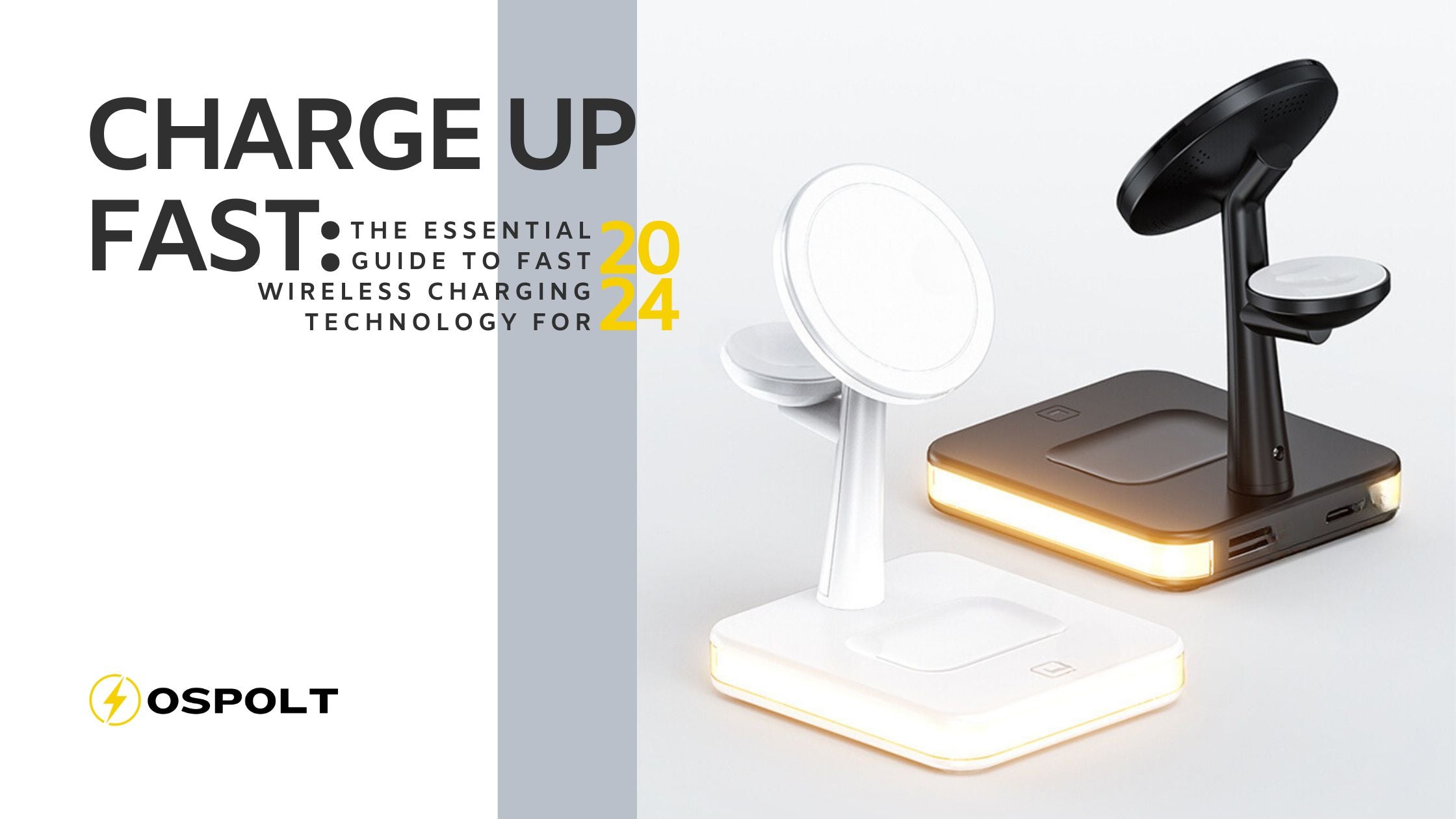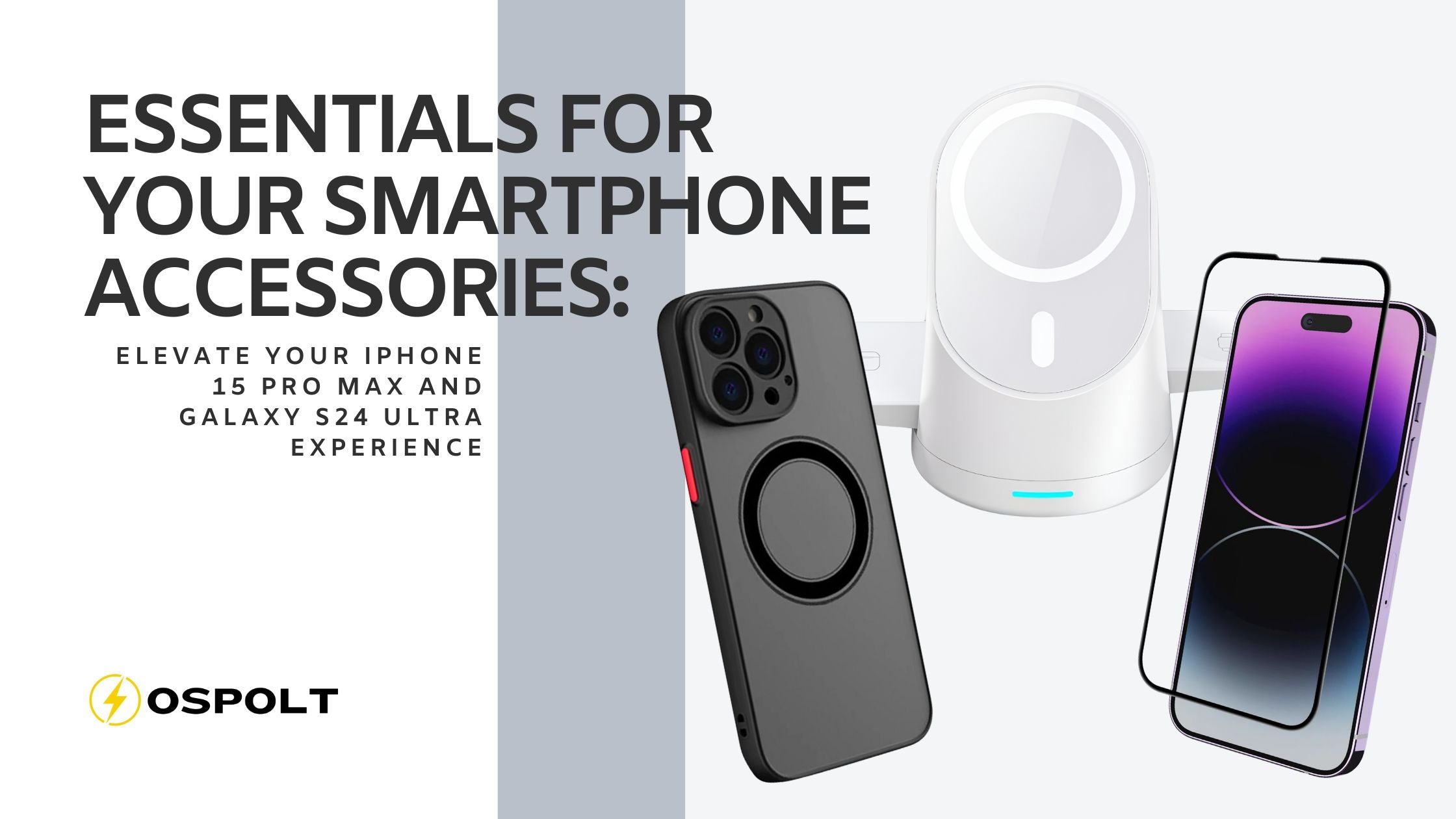As wireless charging technology becomes a staple in the landscape of mobile devices, users of both Android and Apple products are reaping the benefits of this innovative feature. Yet, despite sharing the foundational technology, the implementation and experiences of wireless charging can vary significantly between these two dominant ecosystems. This difference not only influences user convenience but also shapes the purchasing decisions of tech enthusiasts around the world.
In this blog post, we'll explore the nuances of wireless charging solutions offered by Android and Apple. From Apple’s proprietary MagSafe technology to the diverse array of Qi-enabled devices across the Android spectrum, each approach has its unique advantages and limitations. Whether you're committed to your Apple iPhone or prefer the versatility of Android devices, understanding these differences is key to maximising the potential of your mobile experience.
Join us as we delve into a comparative analysis of wireless charging within the Android and Apple ecosystems, shedding light on what each has to offer and what future developments might bridge the gap between them. Whether you’re a gadget guru or just curious about wireless charging, this guide will help you navigate the intricacies of this cutting-edge technology.
How Wireless Charging Works
Wireless charging uses electromagnetic fields to transfer energy between two objects through induction. The process involves two key components: a transmitter and a receiver. The transmitter, which is part of the charging station, generates an alternating electromagnetic field using a coil of wire. The receiver, embedded in the device (such as a smartphone or tablet), contains a similar coil that receives the energy from the electromagnetic field and converts it back into electrical current to charge the battery.
The Qi Standard
The most widely adopted standard for wireless charging is Qi (pronounced 'chee'). Developed by the Wireless Power Consortium, Qi ensures compatibility across a broad range of devices and brands. It defines the way energy is transferred, the configuration of transmitter and receiver coils, and safety mechanisms to prevent overheating and energy wastage. Most devices that support wireless charging, including those from Apple and various Android manufacturers, are compatible with Qi-certified chargers.
This universal standard not only simplifies the technology for consumers but also pushes manufacturers to adopt safe and efficient practices in wireless charging. By adhering to the Qi standard, devices are ensured to be compatible with a wide array of charging pads, reducing the need for proprietary chargers and enhancing the user experience.
Wireless Charging in the Apple Ecosystem

Apple’s adoption of wireless charging has been characterised by a blend of innovation and proprietary enhancements, making it a unique player in the wireless charging landscape. From the integration of the Qi standard to the introduction of MagSafe, Apple has tailored its wireless charging approach to enhance user experience and device compatibility.
Integration of Qi Standard
Apple first embraced wireless charging with the introduction of the Apple iPhone 8 and Apple iPhone X in 2017, adopting the universal Qi standard. This move allowed Apple iPhone users to charge their devices on most standard wireless charging pads, eliminating the need for Apple-specific chargers. However, Apple’s implementation often focuses on optimising the charging experience with specific tweaks and enhancements that ensure better efficiency and safety.
Introduction of MagSafe
With the launch of the Apple iPhone 12 series, Apple introduced MagSafe, a new dimension to its wireless charging capability. MagSafe uses a series of magnets embedded around the wireless charging coil to perfectly align the iPhone with the MagSafe charger. This alignment ensures that the most efficient transfer of power is possible and addresses one of the common issues with standard wireless charging—misalignment, which can lead to slower charging speeds or heat generation.
Proprietary Technology and Enhanced Power Delivery
MagSafe not only simplifies the charging process but also increases the power output to 15 watts, compared to the standard 7.5 watts available with traditional Qi wireless charging. This proprietary technology means that while any Qi charger can charge an Apple iPhone, MagSafe chargers are required to unlock faster charging speeds. Additionally, the ecosystem of accessories that MagSafe has spawned, including cases, docks, and even wallets, integrates seamlessly with this technology, enhancing the overall utility and experience.
Compatibility Issues
Despite these advancements, Apple’s approach can sometimes lead to compatibility issues with non-Apple chargers, particularly around achieving optimal charging speeds. Users often need to ensure that their third-party charging pad is fully compatible and supports the higher power output necessary for fast-charging Apple devices.
Wireless Charging in the Android Ecosystem

The Android ecosystem showcases a diverse approach to wireless charging, with numerous manufacturers incorporating this technology in various ways. Unlike Apple’s relatively uniform implementation, Android devices offer a range of wireless charging capabilities, often reflecting the varied needs and preferences of their broad user base.
Diversity in Implementation
Android manufacturers such as Samsung, Google, and Huawei have adopted wireless charging, each adding their unique touches to the technology. For instance, Samsung has been a pioneer with its Fast Wireless Charging technology, which supports higher power outputs similar to Apple’s MagSafe but remains compatible with the Qi standard. Google’s Pixel phones and other devices often integrate wireless charging that is optimised for the ecosystem of accessories like the Pixel Stand, enhancing functionalities such as smart display features and fast charging.
Universal Compatibility
One of the most significant advantages of the Android approach to wireless charging is the commitment to universal compatibility. Most Android devices that support wireless charging adhere strictly to the Qi standard without modifications. This adherence allows users greater flexibility in choosing from a wide range of charging pads, regardless of the brand, without worrying about specific alignment technologies or proprietary enhancements.
Charging Speeds and Capabilities
While many Android devices support fast wireless charging, the speeds and efficiency can vary significantly across different brands and models. For example, some high-end Samsung models support up to 15 watts of wireless charging, while other devices might offer more modest speeds. The disparity in charging capabilities reflects the diverse pricing and feature sets across the Android market, providing options for every level of demand and budget.
Future Developments
Android manufacturers continue to innovate in the space of wireless charging, with some exploring ways to improve the efficiency and convenience of this technology. Innovations such as dual-coil designs for wider charging areas and software enhancements that optimise battery health over long-term use are becoming more common. Additionally, there is ongoing development in the realm of over-the-air wireless charging, which could eventually lead to true wireless charging experiences without the need for direct contact with a charging pad.
Comparative Analysis: Wireless Charging in Android vs. Apple
When comparing wireless charging solutions between Android and Apple devices, several key differences emerge that may influence user preference and device selection. Here’s a detailed analysis of how each ecosystem approaches wireless charging and the implications for users.
Standardisation vs. Proprietary Technology
Apple: Apple’s integration of MagSafe introduces a proprietary element to its wireless charging, offering enhanced features like magnetic alignment and increased power delivery up to 15 watts. However, this can sometimes limit users to Apple-specific accessories to fully benefit from the fastest charging speeds and added functionalities.
Android: Android manufacturers generally adhere more closely to the Qi standard without adding proprietary restrictions. This results in greater compatibility with a wide range of third-party charging pads, giving users more flexibility and choice.
Ecosystem Integration
Apple: The MagSafe technology not only improves charging efficiency but also extends to a range of accessories, creating a tightly integrated ecosystem. This seamless integration can enhance the user experience but often at a higher cost.
Android: While some Android brands offer unique charging features, like Samsung’s Fast Wireless Charging, there is typically less emphasis on creating an exclusive ecosystem. This open approach allows Android users to mix and match accessories across different brands.
Charging Speed and Efficiency
Apple: With MagSafe, Apple devices can charge faster wirelessly, provided that the specific MagSafe charger is used. The precise alignment facilitated by magnets ensures optimal charging efficiency, reducing energy loss.
Android: Fast wireless charging on Android devices can vary, with some models supporting similar speeds to Apple’s MagSafe. However, the lack of a uniform standard like MagSafe means that the charging efficiency might depend more on the specific brand and model of both the phone and the wireless charger.
Cost and Accessibility
Apple: MagSafe chargers and accessories generally carry a premium price tag, reflecting Apple’s typical market positioning. This can be a consideration for users looking for cost-effective solutions.
Android: The more universal approach to wireless charging in the Android ecosystem often results in a wider range of prices and options, potentially offering more budget-friendly choices for consumers.
Future Innovation
Both ecosystems are continually evolving, with Apple likely to further refine MagSafe and possibly expand its capabilities. Android may see broader innovations from multiple manufacturers, pushing forward technologies like over-the-air charging or improved multi-device charging stations.
Future Trends in Wireless Charging
Wireless charging technology is rapidly evolving, pushing the boundaries of convenience and integration. As we look to the future, several trends are set to shape the next generation of wireless charging for both Android and Apple devices, potentially transforming how we interact with our technology.
Increased Power and Efficiency
Advancements in Power Delivery: Future wireless chargers are likely to offer even higher wattages, reducing charging times significantly. Both ecosystems may adopt technologies that allow for 30 watts or more, making wireless charging as fast or faster than traditional wired methods.
Enhanced Efficiency: Researchers are working on new ways to increase the efficiency of power transfer, reducing energy loss and making wireless charging more environmentally friendly and cost-effective.
Over-the-Air Wireless Charging
Room-Scale Charging: One of the most exciting prospects is over-the-air wireless charging, where devices can be charged at a distance, without needing to be placed on a pad. Both Apple and Android are interested in this technology, which could lead to charging devices simply by being within a certain range of a charging station.
Targeted Power Delivery: This technology would not only offer unprecedented convenience but also the ability to charge multiple devices simultaneously within a room, each receiving power according to its needs.
Integration with Smart Home and IoT
Seamless Device Interaction: As homes become smarter, wireless charging stations could become hubs that not only charge devices but also integrate them into the home’s IoT network. For example, a wireless charger could trigger personalised settings when a device is placed on it, adjusting lighting, temperature, or playing music.
Data Transmission: Future wireless chargers might also transmit data, syncing devices while they charge, and enhancing the connectivity across the user’s digital ecosystem.
Flexible and Invisible Charging Solutions
Embedded Charging: Looking ahead, we might see furniture and vehicles with built-in wireless charging capabilities becoming standard. This integration would make charging pads and docks obsolete, as tables, desks, and even walls become charging surfaces.
Aesthetic Improvements: As the technology becomes more widespread, aesthetic considerations will play a bigger role. Future wireless chargers will likely be designed to be nearly invisible, blending seamlessly into environments without the need for visible hardware.
Enhanced Safety and Sustainability
Eco-Friendly Materials: With a growing emphasis on sustainability, future wireless charging devices will likely incorporate biodegradable or recycled materials.
Improved Safety Features: As power outputs increase, so does the potential for safety risks. Future devices will incorporate more advanced safety features to manage heat and prevent overcharging, ensuring devices and users remain safe.
Conclusion
The landscape of wireless charging is evolving rapidly, with each development bringing us closer to a future where powering our devices is as seamless as using them. Throughout this analysis, we've seen how Apple and Android are pioneering distinct paths within their ecosystems, each with its unique strengths and challenges. Apple’s MagSafe technology offers a highly integrated and efficient charging solution, albeit at a premium, while Android’s approach champions versatility and broad compatibility, ensuring users have a wide range of options.
As wireless charging technology advances, it is poised to become more than just an alternative to wired charging; it could fundamentally change the way we interact with our devices and our environments. From over-the-air charging that powers devices within a room to smart home integrations that transform how our devices communicate, the possibilities are expansive.
Are you ready to embrace the future of wireless charging? Whether you're an Apple aficionado or an Android enthusiast, at ospolt.com, you’ll find a curated selection of the latest and most efficient wireless chargers suited to your needs. Explore our range today and experience cutting-edge convenience and technology. Don’t just charge your device—charge your life.
Visit ospolt.com now to find the perfect wireless charger for your lifestyle and step into the future of effortless power.




Leave a comment
All comments are moderated before being published.
This site is protected by hCaptcha and the hCaptcha Privacy Policy and Terms of Service apply.